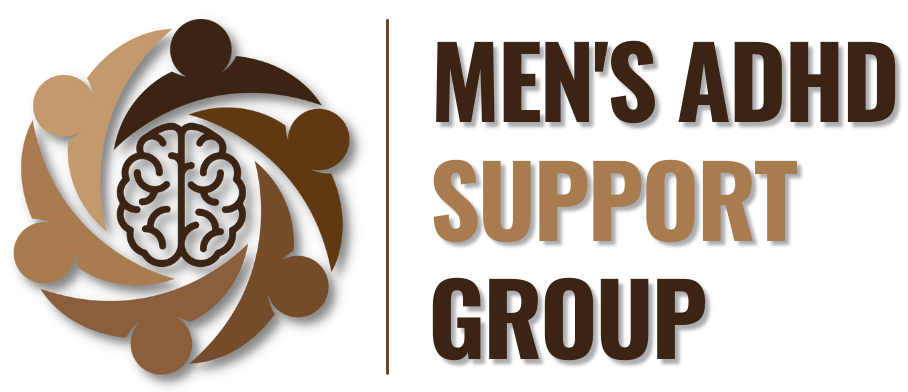Making Friends as an Adult with ADHD
In May, we had the pleasure of having Caroline Maguire, PCC, M.Ed., author of Why Will No One Play With Me?, and she broke down what makes adult friendship so hard—and what you can actually do about it.
Having Caroline Maguire come on to support our Men’s Group was a pretty amazing event. She really helped me understand a lot of things that affirmed what I knew, but also some things that I hadn’t thought about. The below are some things that I took away from it. This isn’t comprehensive, and she goes over so much. It’s just what I really gleaned from it.
You can catch the video on our YouTube channel today!
Adult friendships are hard. For those of us with ADHD, it can be even harder. Caroline’s talk really drove that home—not because it was discouraging, but because it laid out the landscape clearly and offered tools I could actually use. As someone who works with ADHDers all the time, her insights reinforced what I’ve seen again and again: we’re not broken, we just have to do relationships differently.
Why Do We Need To Build Relationships Differently?
Most friendship advice assumes we’ll just fit into neurotypical norms if we try hard enough. But our brains don’t work that way. Interest drives us. Authenticity matters more than polish. We may struggle with small talk or forget to follow up—but when we connect, we do it deeply.
We can’t keep trying to "pass" in social situations. We need to build relationships as we are, and stop judging ourselves for not doing it the same way as everyone else.
Not All Friends Need to Be Everything
One of the things that really stuck with me was the idea that not every connection has to be deep. Caroline called them "flavors of friendship." We can have acquaintances, activity friends, or just people we vibe with in certain contexts—and that’s enough. It takes the pressure off and helps reduce that all-or-nothing thinking ADHDers often fall into.
Get Clear on What You’re Looking For
Before you go trying to connect with people, get honest with yourself about what kind of connection you actually want. That clarity helps prevent frustration and helps you direct your energy in the right places. Whether it’s someone to grab coffee with, someone to game with, or someone to lean on—be real about your needs.
Interest and Structure Matter
The biggest practical piece I took away was the formula: shared interest, regular interaction, and enough time to actually talk. That’s how real friendships form. Not from one-off mixers or random DMs, but from doing things you care about with the same people repeatedly.
Online or in person doesn’t matter. What matters is the consistency and mutual engagement.
Use Roles to Lower the Social Barrier
If starting conversations is hard, having a job or role makes it easier. Run a game, lead a group, or volunteer. That structure takes the pressure off and gives you a reason to interact without feeling awkward or intrusive. It’s a smart workaround that plays to our strengths.
Build Out From the Activity
Don’t try to jump from casual contact to close friend overnight. Take small steps outside of the shared context. Caroline recommended keeping it tied to the original activity: invite the gym buddy to a hike, not a vacation. I liked her suggestion to try twice—and if they’re not interested, move on. That’s a clean boundary to follow.
Share Gradually
The "ice cream scoop" analogy was gold. Give one scoop of your story, see how it lands, then decide whether to add more next time. It’s a way to protect yourself from oversharing while still allowing space for real connection. And it helps filter who’s actually safe to trust.
Make Small Talk Less Awful
"Conversational threading" gave a name to something I try to coach people on already. Instead of giving one-word answers, add layers. For example, don’t just say where you’re from—talk about what you like about it or what brought you there. That gives the other person something to grab onto and builds a real conversation.
If they don’t engage with anything you offer, that’s useful info. Not everyone is your people, and that’s fine.
Don’t Anchor All Your Hopes to One Person
This was a big mindset shift. Spread out your efforts. If one potential friend doesn’t pan out, that doesn’t mean you failed. It just means that thread didn’t lead anywhere. Keep going. Connection isn’t a one-shot deal. It’s a process, and it works better when you’ve got multiple avenues open.
My Final Thoughts on This
You don’t need to be more "normal" to make friends. You need to be more intentional and more yourself. Find spaces where you belong, give trust slowly, and build relationships that fit how your brain works.
What Caroline gave us wasn’t just encouragement—it was a set of tools. Real strategies that work with the ADHD brain instead of against it. And that’s what makes this different from most friendship advice out there.
Connection is possible. You just have to build it your way.
Shane Thrapp is a Certified ADHD Life, Relationship, and Career Coach, and the Operations Director for our nonprofit.
He works with ScienceWorks Behavioral Health and he has helped hundreds of people find their paths through the chaos of life with ADHD and find their order and purpose.
He is also a public speaker who works to be a voice in advocacy for adult ADHD awareness.
If you found value in this blog and what we do, then please consider donating or volunteering so that we can keep Inspiring, Educating, and Empowering men to thrive with their ADHD.

